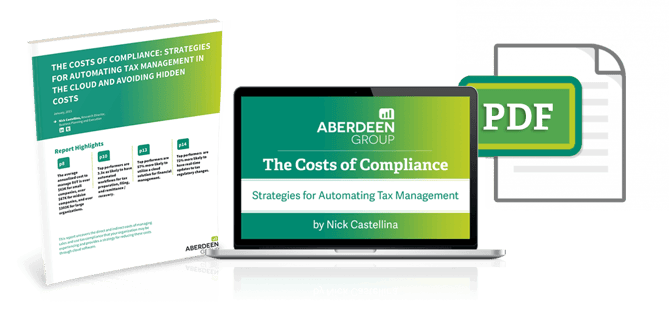This article is provided by the sales tax automation experts at Avalara. You can read the original version on their blog.
If South Dakota, Colorado, and Connecticut are any indication, states are starting to publicize common sales tax management errors. Though they provide a road map for sales tax compliance, these lists are by no means exhaustive. Rules, rates, and boundaries vary between states and localities, but one thing is certain: sales tax is complicated, and the road to compliance is bumpy and long.
Here are five common errors and what you can do about them.
1. Under-reporting sales or use tax due to poor record keeping.
Manually collecting rates, tracking rules, or following boundary changes can lead to errors. Even savvy tax managers with accurate spreadsheets and regular Department of Revenue updates, have difficulty keeping accurate records. Many companies choose to automate sales tax within their financial systems to lower audit risk.
2. Not remitting use taxon items taken from inventory for business or personal use.
Consumer use tax rules vary by state, and apply between businesses as well as consumers and sellers. In states that don’t impose sales tax on out-of-state sales, for example, the retailer purchasing goods from a wholesaler would be required to pay consumer use tax. South Dakota reports that use tax errors are the most common reason for audits.
3. Incorrect returns filing
Filing is one of the many bugaboos of sales tax compliance. Minor errors such as address or customer TIN can indicate systemic errors. Many jurisdictions penalize for late filing or incorrect forms or missed extension deadlines. Increasingly, following the example of the feds, states are only allowing electronic filing.
4. Failure to register in the correct jurisdictions.
Companies are often surprised they are required to register in the states into which they sell. Failure to register is not only a red flag for auditors it can make a material difference to companies. For registered companies being audited in Ohio auditors require only four years of documented transactions; for the unregistered, auditors need to see seven years of transaction records. Such audits and penalties can be costly.
5. Not having valid exemption certificates on file.
Given that tracking and filing exemption certificates is incumbent on the seller, it is crucial to know how to maintain accurate exemption certificates. Without valid certs, a company is open to audit based on iterative assumptions. In other words, auditors take a sample, find one error such as an incorrect address or out of date certificate and assume that a similar error occurs across all certificates, thereby increasing fines, penalties, and fees exponentially.
It is easy to assume sales tax compliance is merely an administrative annoyance, but the consequences of error can be dire. In Connecticut, for example, companies owing back taxes without a plan to repay led to 34 arrests in 2012-2013.
Conclusion
These are five most common sales tax compliance errors found by auditors. However, there are many errors you may have never heard of. Check out our comprehensive Top 10 Sales & Use Tax Tips for more information.
Also check out our free Aberdeen report, “Strategies for Automating Tax Management in the Cloud and Avoiding Hidden Costs.”
In a world of cloud technology, in-memory databases, and mobile everything, why would you continue your DIY efforts when it comes to tax compliance? And more importantly, what is your manual approach truly costing your business?
According to research conducted by Aberdeen Group, one cost is 25 hours per month spent:
- Preparing and remitting returns
- Managing exemption certificates
- Researching product taxability rules
So stop the DIY madness, and automate your tax compliance end-to-end. Get instant access to the Aberdeen research results, “The Costs of Compliance: Strategies for automating tax management in the cloud and avoiding hidden costs.
This information could change the way you handle transactional taxes.








